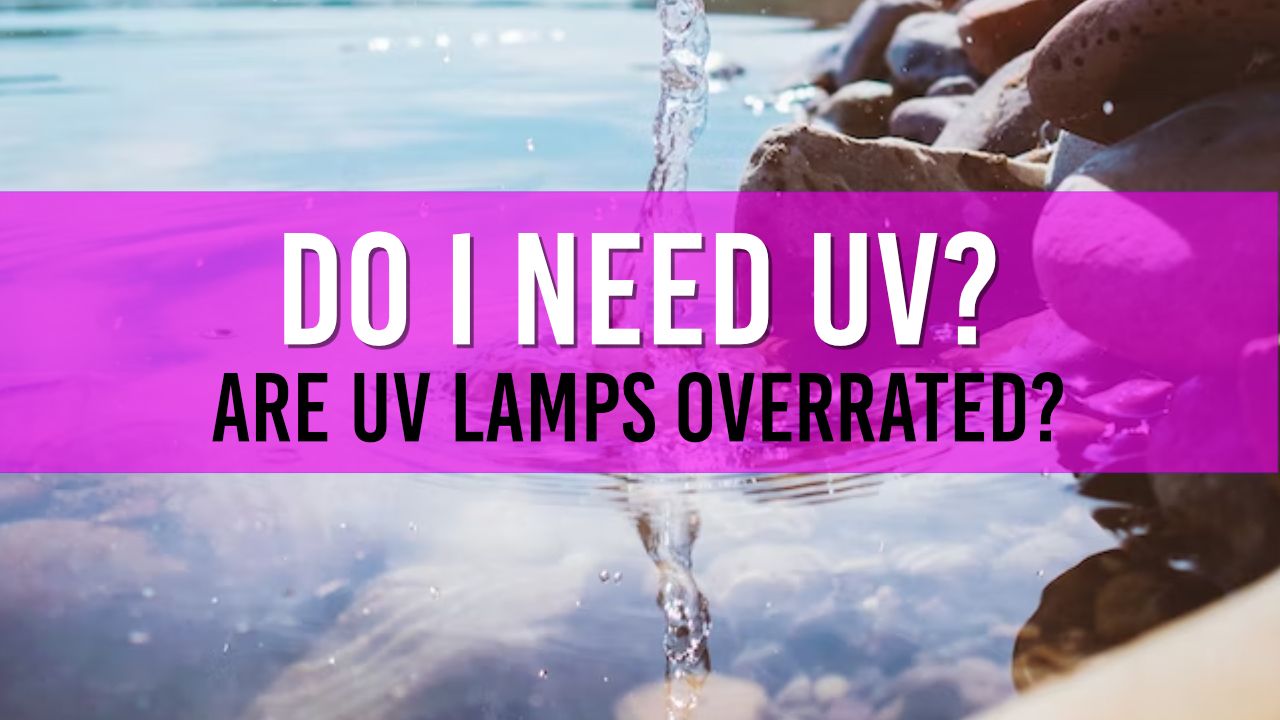Enhancing Pond Water Quality: The Benefits of UV Lamps
Ultra Violet (UV) lamps are designed to break down algae and other particles in your pond to keep your water looking clear and healthy. If you have Koi or lots of other fish, I would always suggest using a UV bulb as part of your pond filtration system.

Table of Contents
As somebody who prefers crystal clear water to a green algae-filled soup, one question that often arises is whether or not a UV lamp is necessary for a pond. In this article, I'll be discussing the benefits of UV lamps, when they're needed, and how to determine if your pond would benefit from one.
What is a UV Lamp and What Does it Do?

A UV lamp, or ultraviolet lamp, is a device that emits ultraviolet light. When used in a pond setting, it's typically part of a UV filter system. These systems are designed to remove algae and harmful microorganisms from the pond water by exposing them to UV light, which damages their DNA and prevents them from reproducing.
One of the main benefits of using a UV lamp in a pond is that it can help to control green water caused by algae blooms. Algae can be detrimental to your pond's health, as it can reduce oxygen levels, block sunlight, and clog filters. By effectively killing algae, a UV lamp helps maintain water clarity and overall pond health.
When is a UV Lamp Necessary?

A UV lamp may be necessary if you're experiencing persistent algae blooms or if your pond has a high fish population. Algae blooms can be triggered by excess nutrients from fish waste, uneaten fish food, or decaying plant matter. These excess nutrients can lead to green water, which can be difficult to manage without the help of a UV lamp.
High fish populations can also contribute to an increased need for a UV lamp. More fish means more waste, which leads to higher nutrient levels and a greater likelihood of algae blooms. In these cases, a UV lamp can be an invaluable tool for maintaining a healthy, clear pond.
How to Determine if Your Pond Needs a UV Lamp
To determine if your pond would benefit from a UV lamp, consider the following factors:
Algae Blooms

Frequent or persistent algae blooms can pose a significant challenge to pond enthusiasts. Despite regular maintenance and appropriate water balance, these blooms may persist. In such cases, the introduction of a UV lamp can be a viable solution to control the algae population effectively.
Fish Population

The size and composition of your fish population have a direct impact on your pond's nutrient levels. A high fish population can contribute to increased waste production, elevating nutrient levels in the water. To counterbalance this, a UV lamp may be required to help manage excess nutrients and maintain water quality.
Water Clarity

The visual clarity of pond water is a critical aspect of its aesthetics and overall health. Consistently murky or discoloured water can detract from the beauty of your pond and may indicate an imbalance. A UV lamp can be employed to enhance water clarity by targeting algae and harmful microorganisms that contribute to turbidity.
Pond Size
The size of your pond plays a pivotal role in its maintenance requirements. Larger ponds tend to accumulate more nutrients and can be challenging to balance. As such, larger ponds may benefit from the installation of a UV lamp to help control nutrient levels and prevent algae blooms.
Pond Plants

The presence of aquatic plants, such as pond lilies, can have a substantial impact on your pond's ecosystem. These plants naturally absorb excess nutrients, acting as a natural deterrent against algae blooms. If your pond boasts a significant population of pond plants, you may find that a UV lamp is unnecessary, as the plants actively contribute to nutrient management.
In Conclusion
While not every pond will require a UV lamp, they can be an essential tool for maintaining a healthy, clear pond in certain situations. If you're experiencing algae blooms or have a high fish population, a UV lamp can help improve water quality and prevent issues related to excess nutrients.

